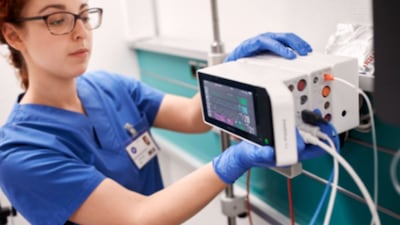DJO Global Inc. launched the new EMPOWR 3D Knee in November at the American Association of Hip and Knee Surgeons 25th Annual Meeting in Dallas, TX. Capitalizing on the success of the original 3DKnee implant system launched in 2003, the EMPOWR 3D Knee preserves the same articular surface geometry; however, the instrumentation has been completely revamped and modernized. Like its predecessor, the EMPOWR 3D Knee targets younger patients with a higher activity level, “but the new implant is also very well suited for the typical, older, knee replacement patient,” says Miranda Jamieson, product director for the EMPOWR 3D Knee.
From a patient’s perspective, “we are offering a premium implant that provides the ability to restore a normal feeling knee,...



